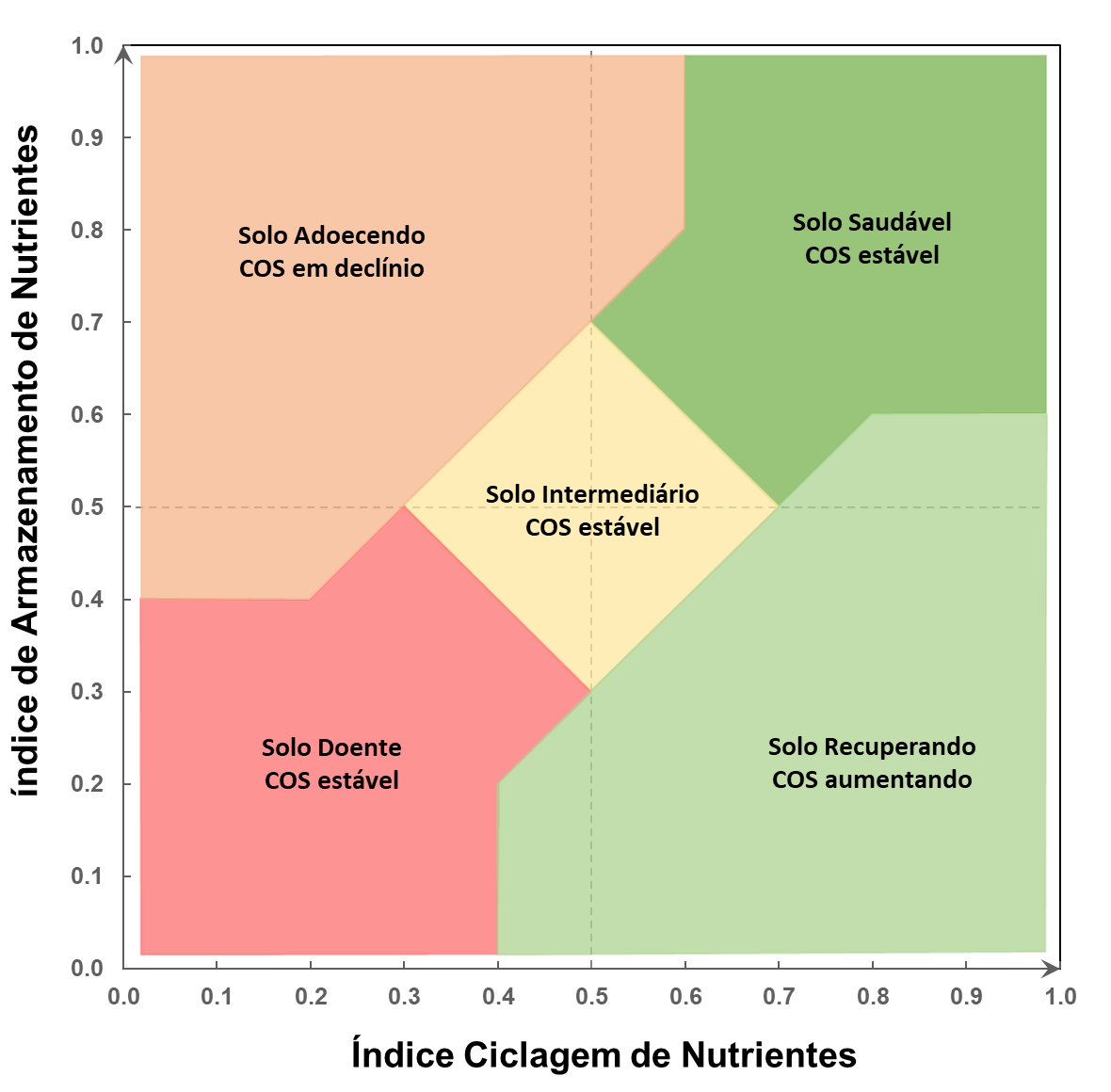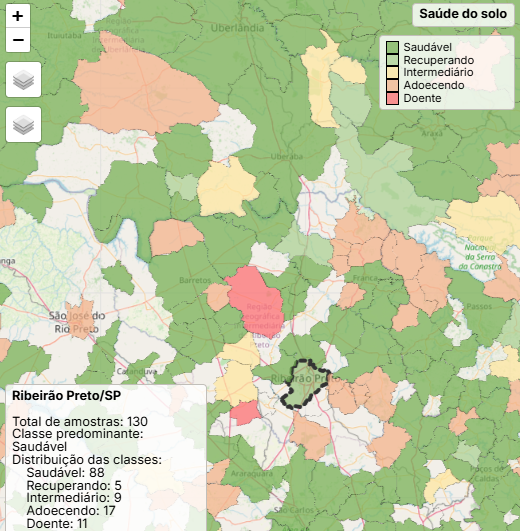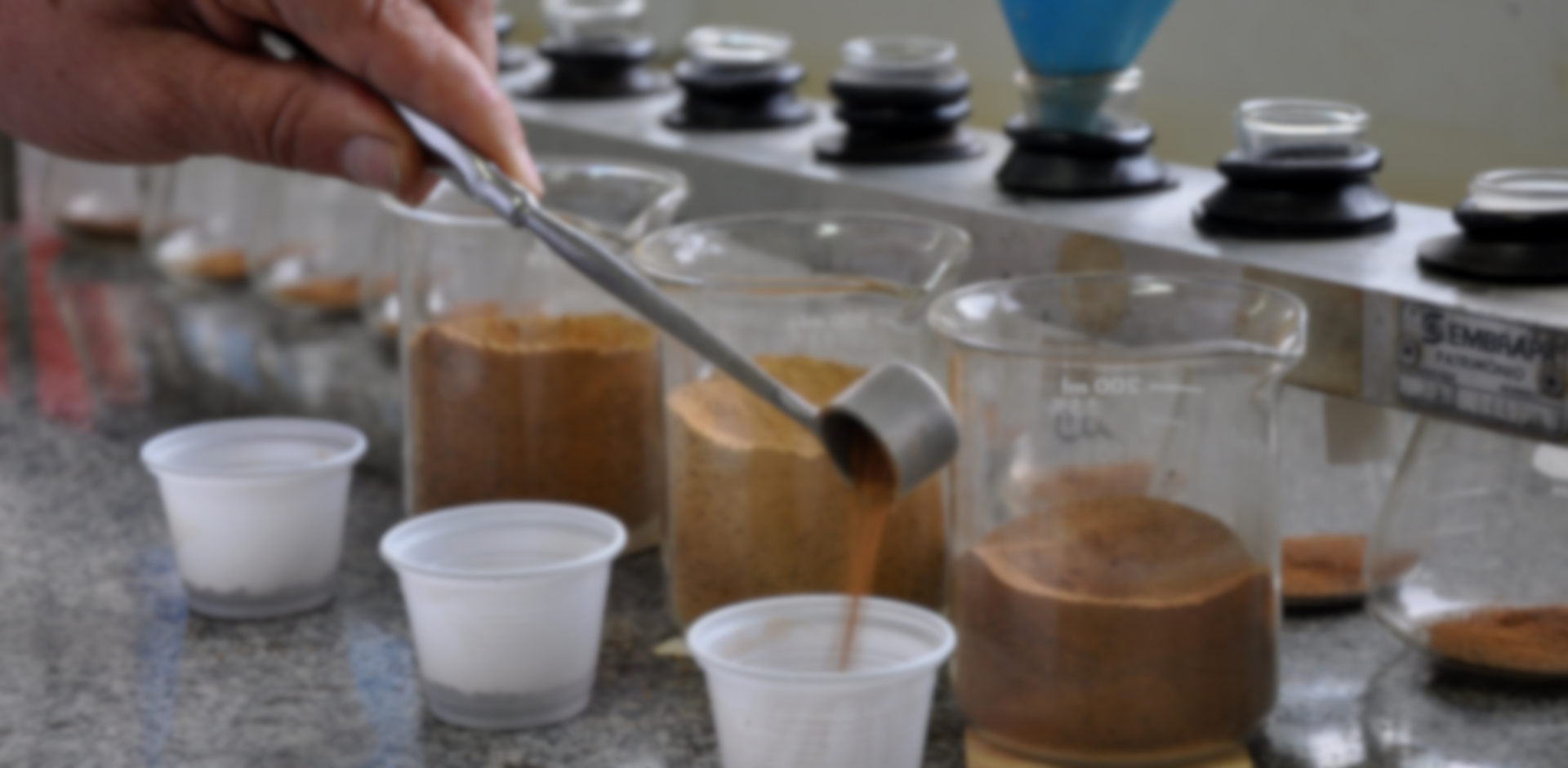The scientific basis that supports SoilBio Technology and soil health indicators.
Soil Bioanalysis - SoilBio
SoilBio is an Embrapa technology that incorporates the biological component into routine soil fertility analyses.
It measures the activity of the enzymes arylsulfatase and β-glucosidase, associated with the sulfur and carbon cycles, respectively — acting as bioindicators of soil health, its productive potential, and its sustainability.
With SoilBio, the farmer can identify whether the soil is healthy, deteriorating, unhealthy, recovering, or in an intermediate condition, allowing for early diagnoses before losses in productivity occur.
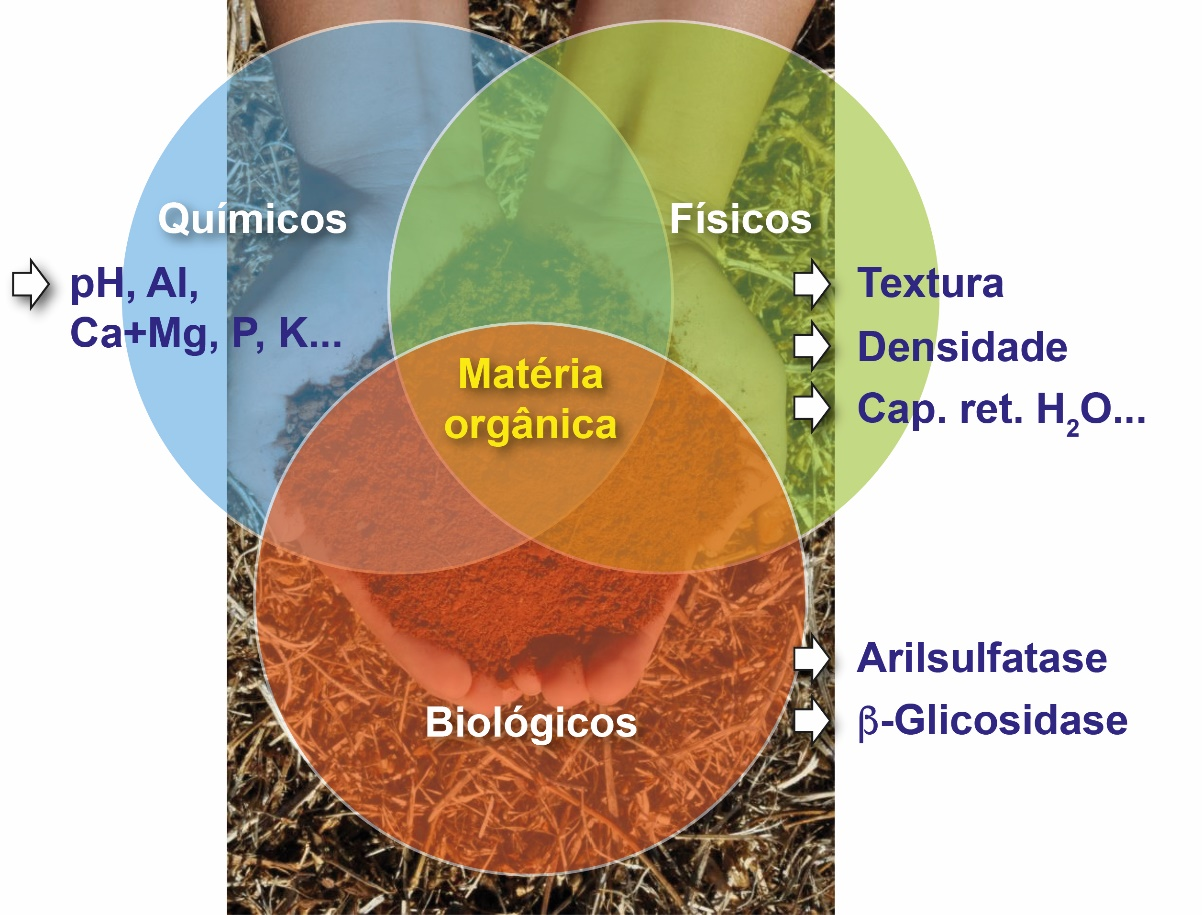
SoilBio Advantages
The SoilBio technology complements traditional chemical analyses, offering additional information on biological activity and soil health.
The enzymes used function as biological eco-sensors, capable of quickly revealing signs of soil degradation or recovery — even before changes in organic matter or physical structure can be observed.
Among the main benefits, the following stand out:
- Direct correlation with grain yield and nutrient use efficiency;
- Positive association with the abundance of beneficial and plant growth-promoting microorganisms;
- Low sensitivity to immediate mineral fertilization, allowing for the assessment of real management trends;
- Direct relationship with organic matter cycling and with the physical structure of the soil;
- Compatibility with routine sampling methods, being able to use the same samples used in the chemical analyses;
- Availability in accredited laboratories of the SoilBio Network throughout Brazil.
👉 Learn about the laboratories participaing in the SoilBio Network.
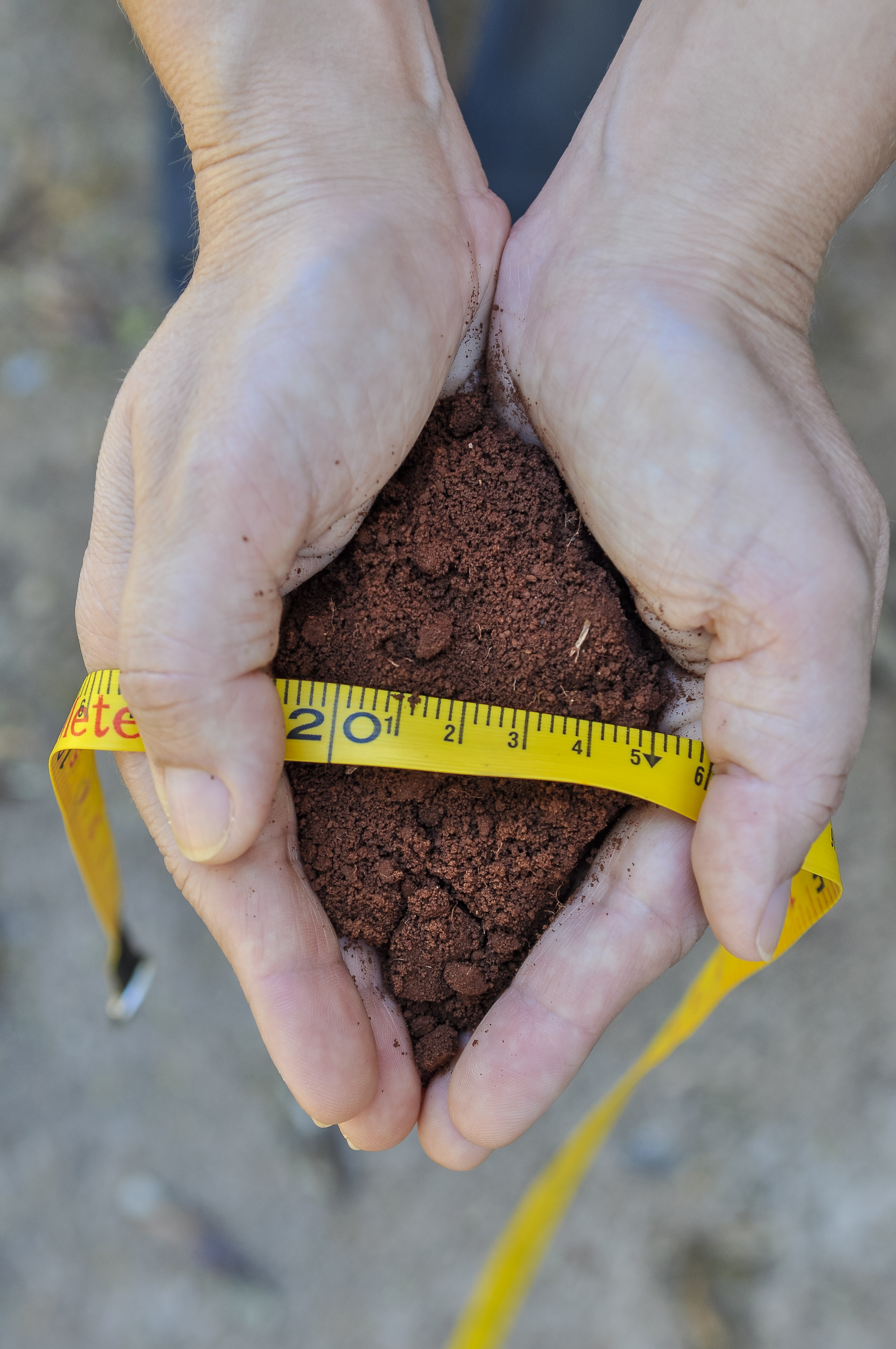
| Step by step | Description |
|---|---|
| Soil sampling | 0 a 10 cm depth. Same procedures used for soil chemistry sampling; |
| Sampling period | After the 'off-season' crop, or at the end of the rainy season; |
| Soil samples pre-treatment | Air-dried soil and sieved through a 2 mm mesh; |
| Where to send the samples | Laboratories from Embrapa's network of Soil BioAnalysis (SoilBio Network) |
| Interpretation | Interpretation algorithms calibrated in relation to grain yield and soil organic matter |
Soil Quality indicators
SoilBio integrates enzymatic and chemical analyses into indices that evaluate three key soil functions
F1 - Nutrient Cycling: measures the biological activity responsible for nutrient cycling, based on sufficiency levels of the activity of the enzymes arylsulfatase and beta-glucosidase, adjusted to regional, textural, and soil use conditions.
F2 - Nutrient Storage: combines levels of organic matter and cation exchange capacity (CEC), adjusted to the soil type and textural class, reflecting the potential for nutrient stock and retention.
F3 - Nutrient Supply: estimates the effective soil fertility, integrating acidity and the availability of essential macronutrients.
👉 Learn more
How to interpret?
The interpretation of soil health by SoilBio technology considers the relationship between the functions of nutrient cycling and storage. When both are balanced, the soil tends to be in a stable condition — healthy, intermediate, or unhealthy.
Differences between the two functions indicate transition patterns:
- Low cycling and high storage → loss of biological quality (deteriorating soil).
- High cycling and low storage → regeneration in progress (soil recovering).
Deteriorating soils show a tendency toward loss of organic carbon (SOC), while soils in regeneration show a tendency toward gain of SOC.
The function of nutrient supply acts as an integrated fertility indicator, reflecting the soil's capacity to make nutrients available and correct acidity — essential aspects for agricultural productivity and sustainability.
From laboratory to map: how SoilBio data transforms into soil health indicators.
